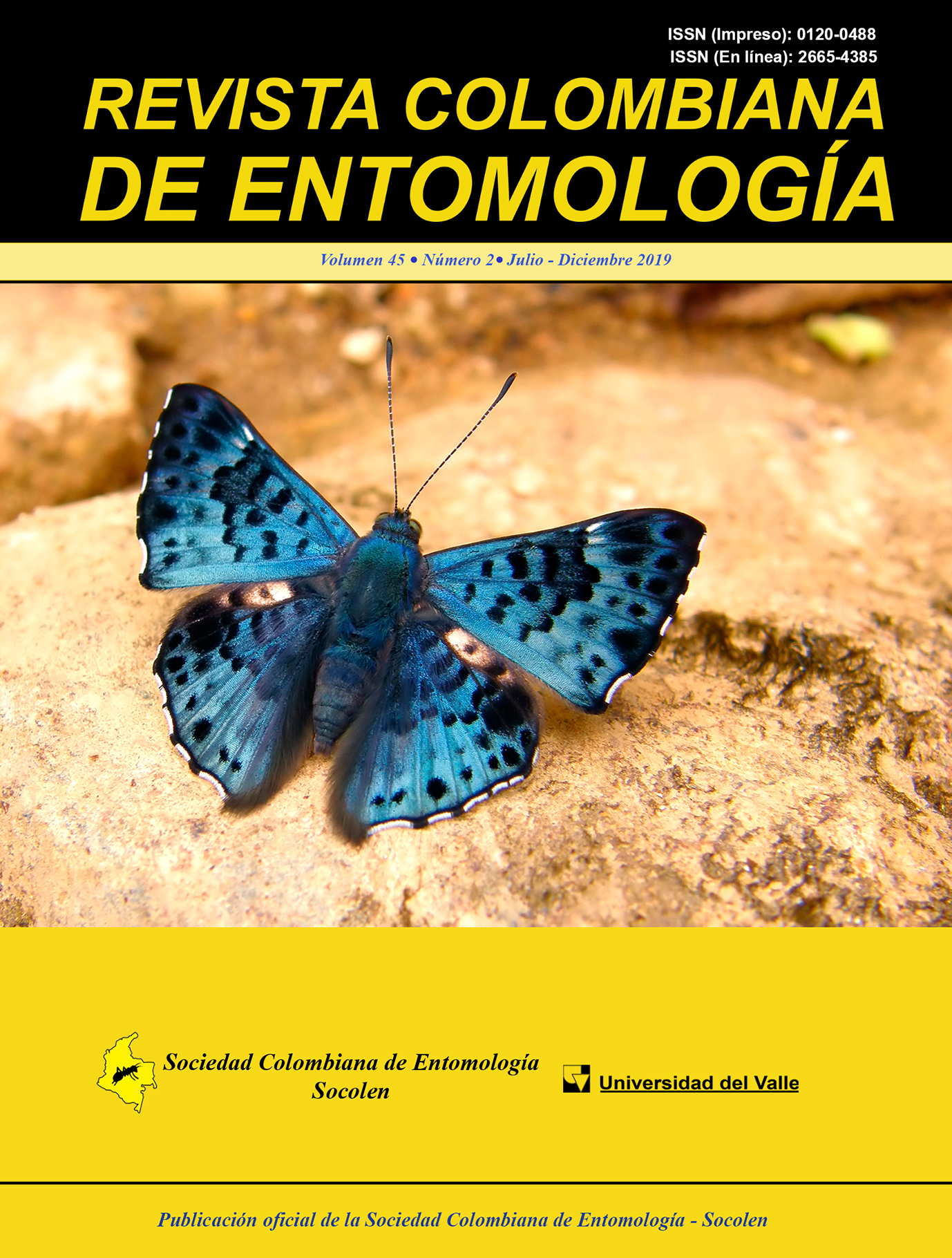Monitoring methods of weevil adults of citrus Compsus viridivittatus (Coleoptera: Curculionidae: Entiminae)
Keywords:
Monitoring, traps, populations, citrus, management, Compsus viridivittatus, Coleoptera, CurculionidaeMain Article Content
The efficiency of two adult monitoring methods for pest Compsus viridivittatus in several regions in Colombia: tarpaulin on the floor (TF), for the detection of adult populations in the tree, and cone-shaped ground traps (CT) for young populations emerging from the soil was evaluated. Studies were conducted in four independent plots located in Caicedonia (Valle del Cauca, Colombia), for 51 weeks in a completely randomized design with 20 replicates / method / plot / locality. The sampling effort in all localities amounted to 160 trees per week. During the study, 1,961 emergent adults (1,363 females: 598 males) were obtained using CT and 5,060 adults (3,117 females: 1,943 males) were obtained with TF. The highest average number of catches occurred during periods of maximum rainfall (60-103 mm / week), with 2.5 adults caught using CT and 5 adults caught using TF. Significant differences were found in the abundance of populations between plots; the TF range was 10-24 adults/trap and the CT range was 4-20 adults/trap. The sixty-six percent (66 %) correlation found between methods / plot suggests that changes in population abundance can be explained by the dynamics of populations emerging from the soil. In summary, the results indicate that independent use and / or combination of the methods can be useful as a criterion for decision making about the time and type of alternative to implement for the reduction of C. viridivittatus populations.
Downloads

This work is licensed under a Creative Commons Attribution-NonCommercial-ShareAlike 4.0 International License.
Authors retain the copyright on their work and are responsible for the ideas expressed in them. Once a manuscript is approved for publication, authors are asked for a publication license for the term of legal protection, for all territories that allows the use, dissemination and disclosure of the same.

